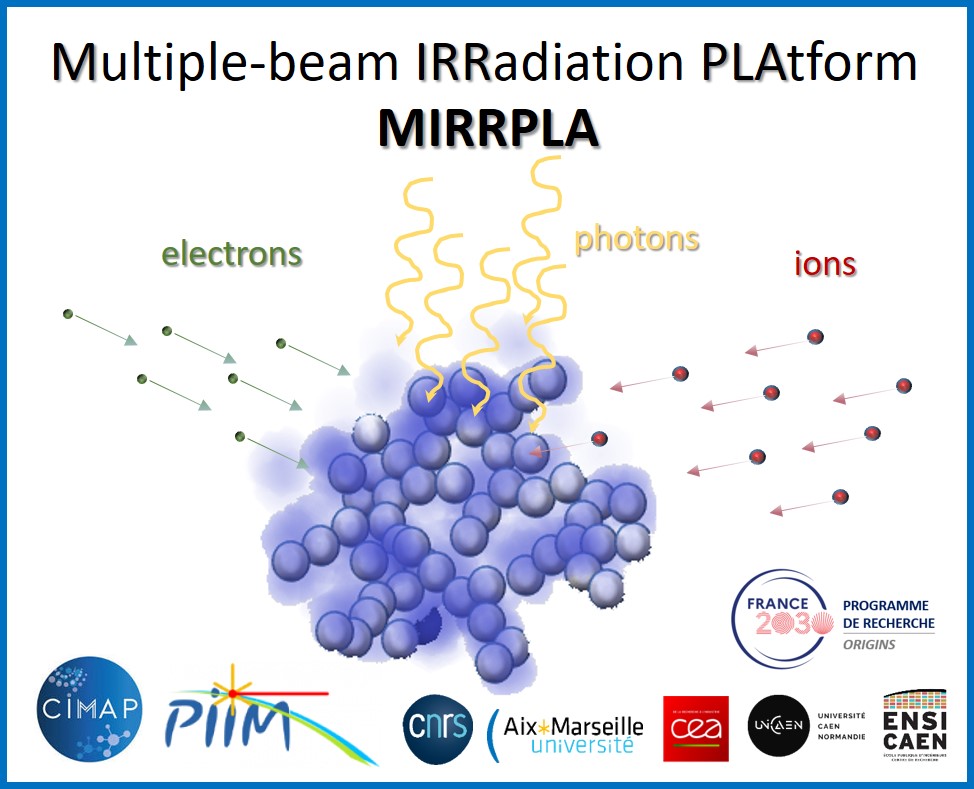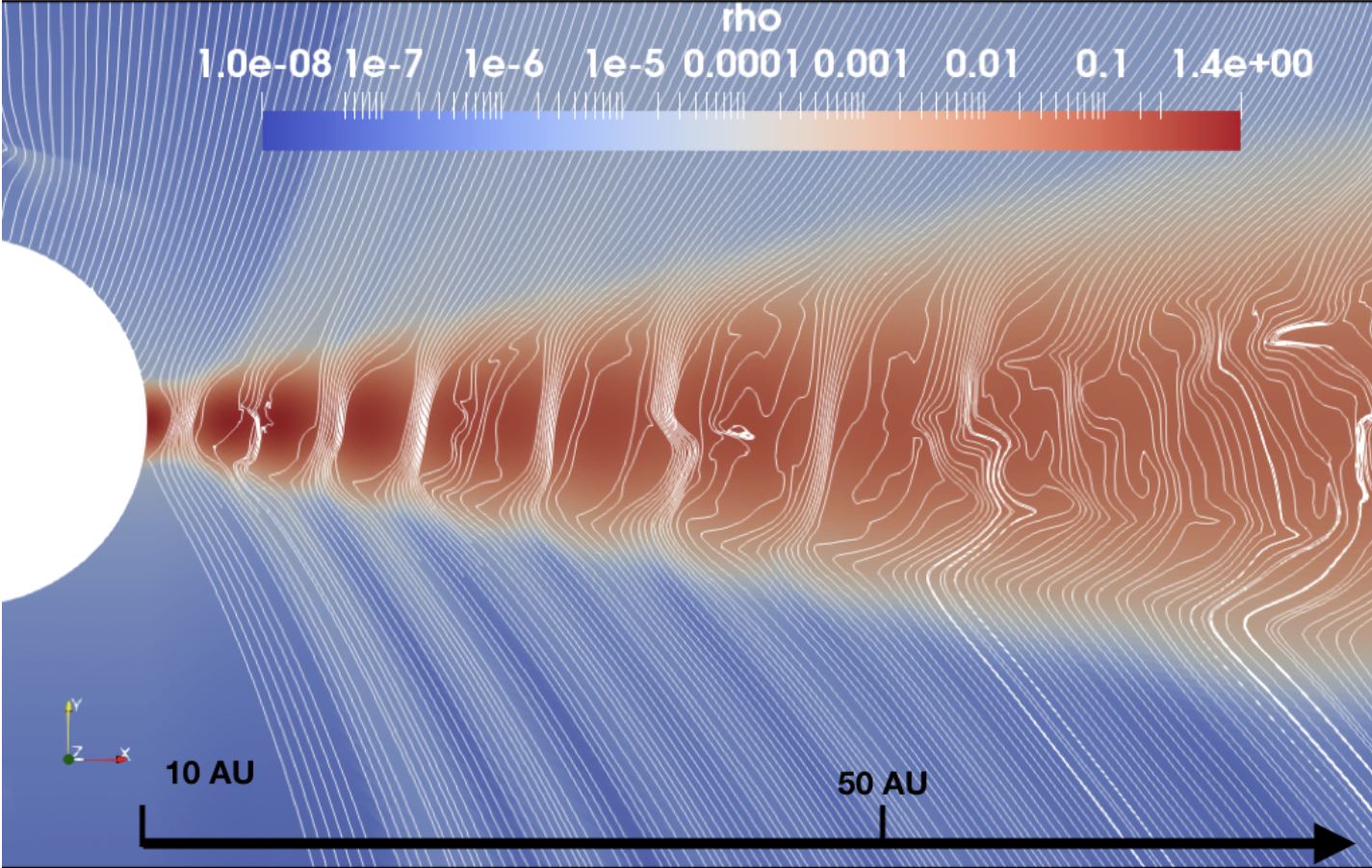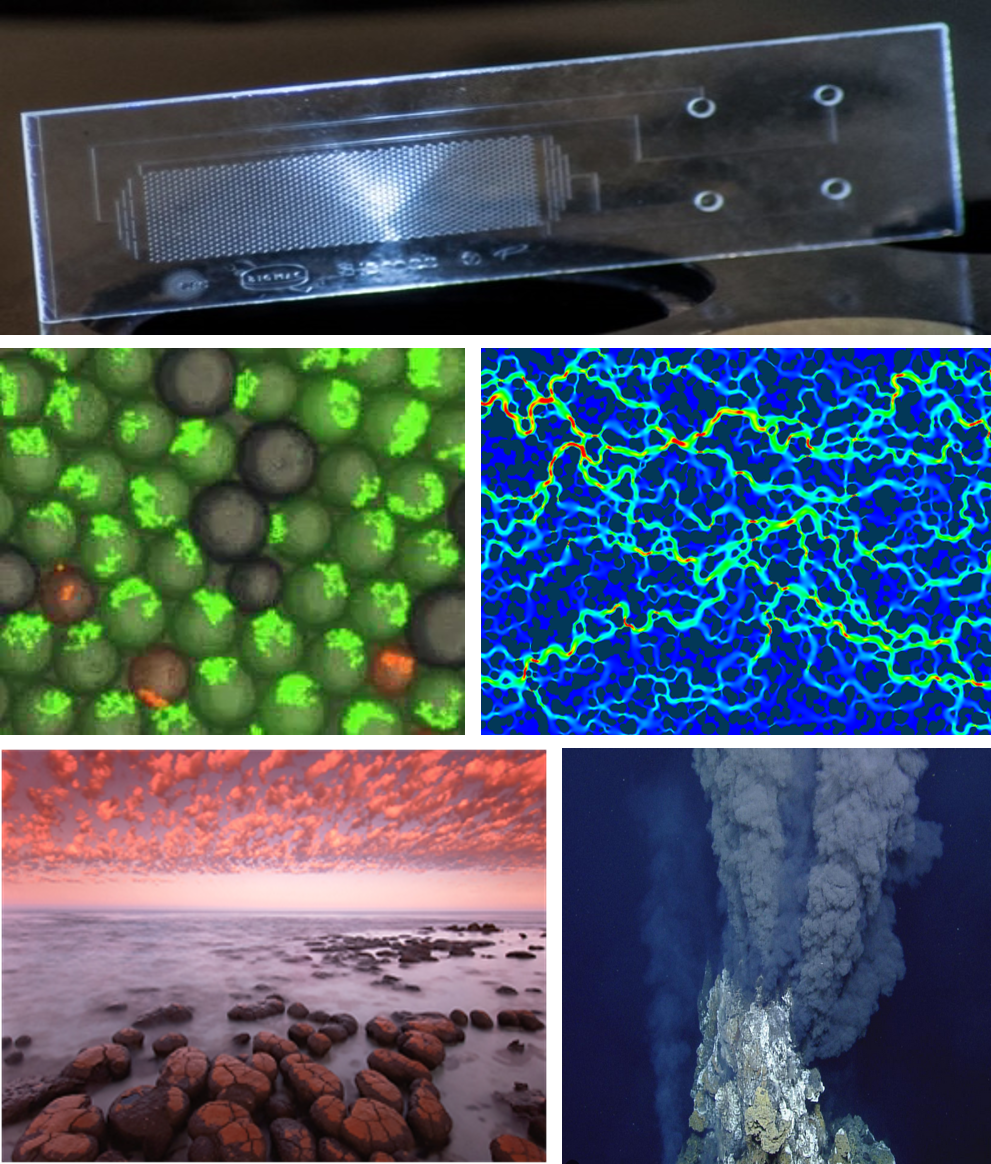
MIRRPLA
MIRRPLA : Multiple-beam IRRadiation PLAtform to investigate the origin and evolution of organic matter of the Solar System
Overview
Multi-beam irradiation platform to study the origin and evolution of organic matter in the solar system
Alicja DOMARACKA (CIMAP,Caen ; CNRS, CEA, UNICAEN, ENSICAEN), porter
Grégoire DANGER (PIIM, Marseille ; UAM, CNRS), co-porter
Understanding the origin of primitive organic matter during the formation and evolution of the solar system is fundamental, since the contribution of extraterrestrial organic matter via asteroids and comets is one of the possible sources of organic matter available at the time of the primitive Earth. In astrophysical environments, matter is constantly exposed to multiple types of radiation (UV, X-rays, electrons and ions from solar winds, cosmic rays and ions trapped in magnetospheres). These different types of radiation act simultaneously, but existing laboratory astrophysics experiments are generally carried out using a single source of irradiation, and synergistic effects are not studied.
Simultaneous irradiation with several beams (photons, ions, electrons) is therefore necessary.
- astrophysical ice analogues containing small molecules such as H2O, CO, CO2, NH3, CH3OH) or solid samples prepared ex-situ to quantify the formation of complex organic molecules (prebiotic species in particular) as a function of initial ice composition and temperature (10-300K)
- of complex organic matter (amino acids, nucleobases) to study their resistance to ionizing radiation and to simulate the evolution of solar system bodies under irradiation.
To achieve this, we will build a unique multi-beam irradiation platform (UV photons, keV electrons and keV-GeV ions delivered by the GANIL-Grand Accélérateur National d’Ions Lourds, Caen France ) equipped with an infrared spectrometer and a mass spectrometer. Organic molecules formed during irradiation and/or heating of the ice will be detected using gas chromatography and in-situ mass spectrometry. This new multi-purpose instrument, the MIRRPLA platform, will be open to different scientific communities (astrophysics, radiobiology, environmental and materials sciences) as well as to industry via the GANIL-CIMAP-CIRIL user platform.
To develop
Our researchs
Design and build a platform for sample preparation and multi-beam irradiation with photons, electrons and UV ions
The uniqueness of the proposed set-up lies in the combination of different types of ionizing radiation (photons, electrons, ions), including the possibility of simultaneous irradiation of samples: for example, a GANIL ion beam plus UV photons or electrons to simulate a complex irradiation field as in space. Modifications induced by the energy treatment will be monitored by Fourier transform infrared absorption spectroscopy. Species emitted to the gas phase via a sputtering or desorption mechanism will be monitored by quadrupole mass spectrometry. In addition, a high-resolution mass spectrometer coupled to gas chromatography (CG-Orbitrap) will be connected to the irradiation chamber to study volatile organic compounds (VOCs) created during irradiation of interstellar/cometary ice analogues.
Scientific use of the MIRRPA Platform
- Study of the synergistic effect of multibeam irradiation on the destruction and formation of molecular species in the sample volume, particles emitted into the gas phase and pure or mixed ice residues ;
- Study of the physical state of irradiated ices, in particular their relationship with the surface chemistry invoked for astrophysical environments, the available surface and its reactivity being a key problem in astrophysics ;
- Study of the formation of complex organic molecules at the interfaces between icy mantles and carbonaceous dust grains ;
- Supply organic residues obtained by irradiation to other PEPR Origins partners (e.g. ultra-high resolution mass spectrometry analysis; residues formed using the MIRRPLA platform can be used by other PEPR Origins partners as “primary material” to study its subsequent chemical evolution/complexification under different environmental conditions).
The Consortium
Université Aix Marseille, CNRS, PIIM, CEA, CIMAP, ENSI Caen, Université Caen Normandie
Scientific expectations
Development of a state-of-the-art irradiation platform.
Scientific publications in general, physics and astrophysics journals.
Societal impacts
Societal importance of questions linked to the origin of complex organic species (prebiotic) on the primitive Earth. The platform will be open to the entire scientific community. We anticipate applications in the following areas :
• Health : it is proposed to use combined mixed beams (e.g. photons and ions) for radiotherapy of resistant tumors. MIRRPLA will offer a unique opportunity to study the fundamental processes involved in mixed irradiation of biomolecules and DNA fragments to develop new cancer treatment protocols.
• Environmental sciences : polycyclic aromatic hydrocarbons (PAHs) are produced during combustion and are key intermediates in the formation and growth of soot particles. In addition, carbonaceous nanoparticles can be covered with water ice in the upper atmosphere and exposed to various types of ionizing radiation. MIRRPLA will enable us to study the reactivity of water-ice-covered soot analogues triggered by ion/photon/electron irradiation.
• Materials science : this unique facility enables us to study (i) the ageing of materials under mixed environment irradiation (nuclear fuel cells, reactor materials, ceramics/glass for radioactive waste storage; polymers); (ii) simultaneous multi-radiation effects on materials used in spacecraft and space missions (hulls, electronics).
Skills development
9 permanent staff (2 researchers, 2 teacher-researchers, 1 engineer, 4 technicians); 1 postdoctoral fellow and 2 PhD students
More projects


